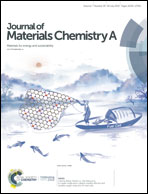Bio-inspired sustainable and durable superhydrophobic materials: from nature to market
Abstract
Nature has endowed many of its living systems with functional structures with highly tuned wettability. Inspired by nature, scientists began to mimic these natural templates and as a result a wide spectrum of biomimetic superhydrophobic surfaces are fabricated. Fluorinated synthetic materials are currently used on an industrial scale to produce superhydrophobic surfaces. The negative impact of fluorinated substances on human health together with growing environmental concerns has prompted researchers to adopt safer routes with minimal use of fluorinated compounds. This has led to increased focus on bio-inspired studies. Current research on the fabrication and characterisation of superhydrophobic materials aims to use fluorine-free reagents such as siloxane polymers and long-chain fatty acids. In this context, this review attempts to highlight the recent progress in fluorine-free superhydrophobic surfaces and important features of their design, synthesis and fabrication that would potentially broaden their application in various fields. This review also aims to provide insights into technical breakthroughs in manufacturing of these materials with the aid of easy-to-understand illustrations. The current challenges regarding scale up, industrial production and marketing of these novel and natural polymer based superhydrophobic materials are also highlighted.

- This article is part of the themed collection: Recent Review Articles


 Please wait while we load your content...
Please wait while we load your content...